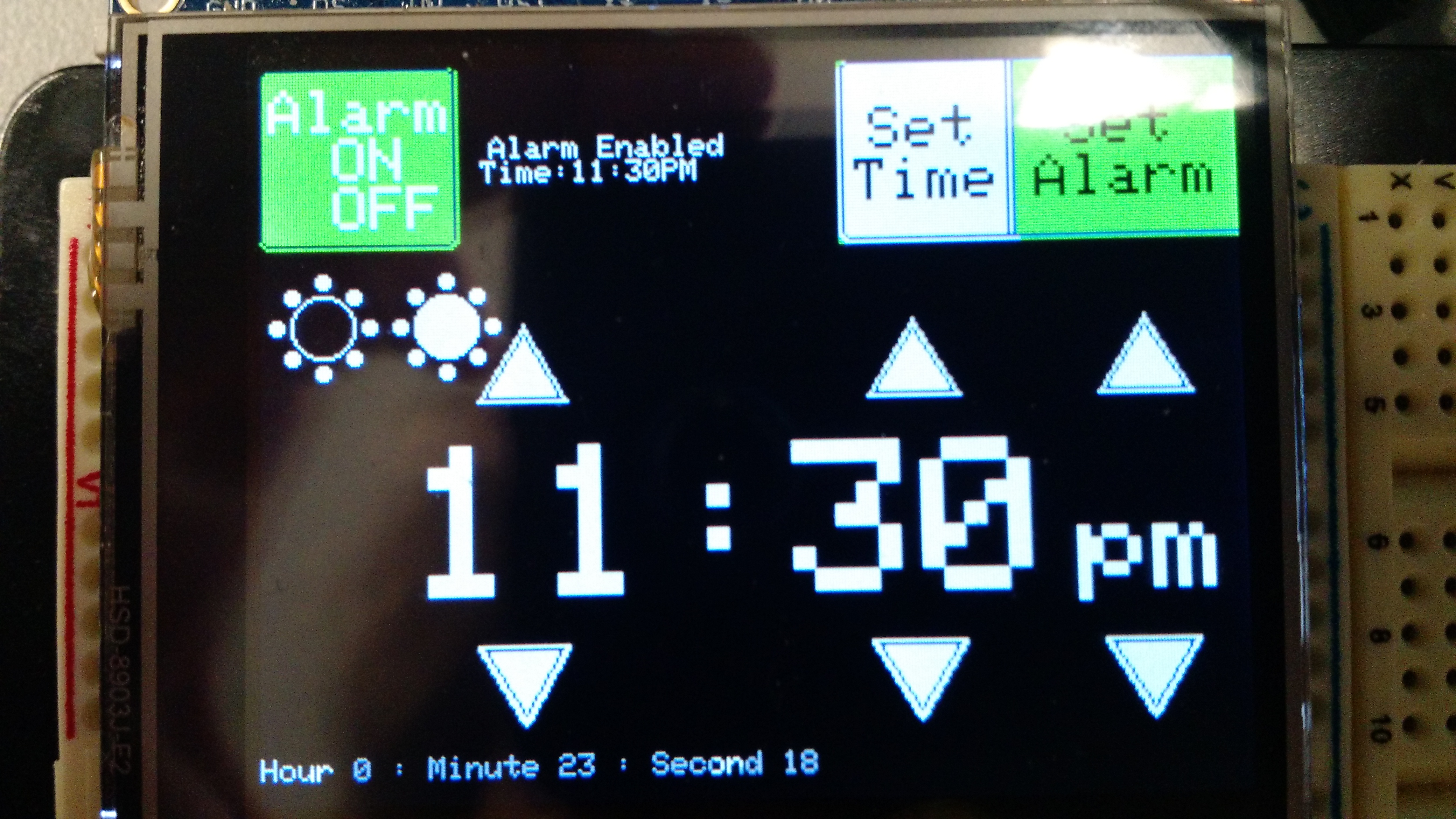Touch Screen Performance
The touch screen performed almost exactly as we would like in our design. We wanted the user to be able to use the touch screen in an easy and fast way. We wanted it to be responsive and we also wanted the buttons to only do the action they were intended to do once when pressed i.e. we wanted them to latch on each touch. The actions performed by the touch screen controls were also relatively quick. The screens switched quickly and the alarm would turn on and off almost instantly. The only action we would have liked to be bit quicker was the changing of time using the arrow buttons on the set time and set alarm time screens. There was a bit of delay between each increment or decrement, however the performance was good enough and allowed for simple, easy interaction.
Dimming Feature
Unfortunately we were not able to get the dimming feature fully implemented. We developed the dimming feature in parallel and on a separate board without the Alarm system and EEG reading system implemented. When we attempted to integrate the dimming feature into the full system, we had a lot of issues sending a consistent PWM signal to the LCD screen. The PWM signal would be periodically interrupted by a constant high signal on the same pin, and thus the screen would dim and then flash back to the normal highest brightness. We could not locate the source of this PWM signal interruption. Though it was not integrated to the full system, on the separate board we were able to develop four different brightness settings.
Real Time Clock Accuracy
We were able to get the real time clock working to be very accurate over relatively large periods of time. Over the course of 24 hours it had only changed by about 15 seconds which means it loses accuracy at a rate of about 1 minute per four days. If we were to work on it more, it is very possible that we could have an almost atomic like real time clock which would be fantastic for our accuracy over long periods of time.
Alarm Clock Performance
We were able to get the alarm working exactly as we would have liked. The user is able to set the alarm time value at any time and is able to turn the alarm on or off at anytime. If the alarm is not triggered early by the sleep state analysis sub-system and the alarm is turned on, the alarm will go off exactly at the moment the Real Time Clock value matches the alarm time value. When the alarm is triggered, the audio signal will be generated and will keep going off until the user turns the alarm off on the touch screen. There is no snooze feature on the alarm clock.
EEG Sensor Accuracy
Testing the accuracy of the EEG sensor was very difficult. We had no sort of accurate data to compare it against in our tests so determination about the quality of the data was based mostly on online reports about the headset’s quality. The one test we did conduct with the EEG sensor was a test described in some of the supporting source code we found for the headset. The test involved attempting to control the blinking rate of a LED by focusing on it and thusly increasing the attention value given by the TGAM1 chip on the headset. This supposedly was good way to determine if the headset was working correctly. We set up an chipKit board to run this code and were able to influence the blinking rate. However we unsure if this may be just an illusion of control phenomena.
Testing Results
There was one night of testing trials conducting and two trials were conducted over the course of that night.
- The first trial, the alarm was set for 3:00am. The subject went to sleep at 2:00am. The alarm was triggered at 3:00am.
- The second trial, the alarm was set for 6:55am. The subject went to sleep shortly after 3:00am. The alarm was triggered at about 6:40am.

